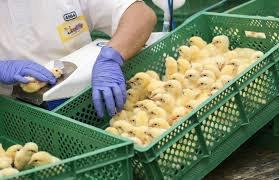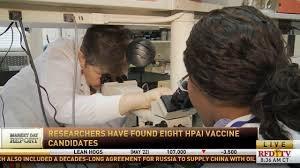 The recent National Meeting on Poultry Health, Processing and Live Production clearly demonstrated a division between the needs of the broiler and egg production segments of the industry in acceptance of vaccination as a preventive measure against highly pathogenic avian influenza (HPAI). Opposition to vaccination was evident during the 2015 epornitic which persisted through late May of that year, resulting in depletion of 43 million laying hens although the broiler industry was unscathed. The question of vaccination to prevent and control HPAI has naturally re-emerged during the 2022 epornitic that, to date, is responsible for the loss of approximately 36 million egg producing hens and pullets on 27 farms, 7.5 million turkeys on 173 farms but only 2.4 million broilers on 12 farms and 280,000 broiler breeders on eight farms.
The recent National Meeting on Poultry Health, Processing and Live Production clearly demonstrated a division between the needs of the broiler and egg production segments of the industry in acceptance of vaccination as a preventive measure against highly pathogenic avian influenza (HPAI). Opposition to vaccination was evident during the 2015 epornitic which persisted through late May of that year, resulting in depletion of 43 million laying hens although the broiler industry was unscathed. The question of vaccination to prevent and control HPAI has naturally re-emerged during the 2022 epornitic that, to date, is responsible for the loss of approximately 36 million egg producing hens and pullets on 27 farms, 7.5 million turkeys on 173 farms but only 2.4 million broilers on 12 farms and 280,000 broiler breeders on eight farms.
The broiler segment of the U.S. industry is justified in questioning the application of vaccination as it might prejudice export to specific nations. Some importing nations would potentially discriminate against U.S. products in contravention of the World Organization of Animal Health (WOAH) rules. Opposition to vaccination may have been justified in 2015 but circumstances, both with respect to the virus, availability of advanced vaccines and international trade regulations have all changed in seven years.
 The H5N1 Avian Influenza virus with Eurasian genes is different from the H5N2 strain responsible for extensive mortality in 2015. The virus is panornitic in distribution, affecting flocks on four continents. The infection is now clearly pathogenic in a wide range of wild bird species, as evidenced by mass mortality not previously recorded. The epidemiology of H5N1 HPAI in North America is clearly different from the 2015 outbreak caused predominantly by H5N2. Incident cases have persisted from emergence in the Maritime provinces of Canada in January through to the present with every indication of an upsurge coincident with Fall migration of wild birds.
The H5N1 Avian Influenza virus with Eurasian genes is different from the H5N2 strain responsible for extensive mortality in 2015. The virus is panornitic in distribution, affecting flocks on four continents. The infection is now clearly pathogenic in a wide range of wild bird species, as evidenced by mass mortality not previously recorded. The epidemiology of H5N1 HPAI in North America is clearly different from the 2015 outbreak caused predominantly by H5N2. Incident cases have persisted from emergence in the Maritime provinces of Canada in January through to the present with every indication of an upsurge coincident with Fall migration of wild birds.
In 2015, many nations that imported U.S. poultry products imposed nationwide bans precluding shipment. Due to the efforts of USDA-APHIS and USAPEEC with input from academia, the WOAH has adopted more realistic policies relating to export bans based on an appraisal of the disease. Restrictions are now imposed at the state or county level consistent with the WOAH principle of regionalization and with a shorter 28-day exclusion period following the decontamination of affected farms.
Since 2015 there have been significant improvements in the ability to rapidly diagnose AI. Prompt identification and depopulation of infected flocks with concurrent quarantine and surveillance with restrictions of movement of live birds have reduced the dissemination of the virus from an index farm. Higher standards of structural and operational biosecurity are applied, especially in the egg-production sector. With the exception of turkey farms, these preventive measures are considered to be responsible for the lower number of incident outbreaks during the Spring of 2022 as compared to 2015.
 Perhaps the most significant difference between the 2015 and 2022 outbreaks is the growing realization that HPAI may no longer be regarded as an exotic infection. The occurrence of outbreaks in 35 states, persistence of the infection from January through to October and the number of outbreaks, especially among growing turkeys and backyard farms suggest that HPAI, if not seasonally endemic, is de facto an endemic disease.
Perhaps the most significant difference between the 2015 and 2022 outbreaks is the growing realization that HPAI may no longer be regarded as an exotic infection. The occurrence of outbreaks in 35 states, persistence of the infection from January through to October and the number of outbreaks, especially among growing turkeys and backyard farms suggest that HPAI, if not seasonally endemic, is de facto an endemic disease.
Dr. Julie Gauthier, Assistant Director for Poultry Health, USDA-APHIS, correctly stated that inactivated AI vaccines suppress clinical signs and mortality but do not effectively prevent shedding of virus. In her address she noted the development of DIVA vaccines as introduced and applied in Italy during a severe H7 outbreak in 2016-2017. This innovation allowed differentiation between vaccinated and infected flocks on the basis of serology.
Using antibody assay as a diagnostic criterion is an obsolete concept. Dr. Gauthier should know that diagnosis in modern production is based on antigen detection applying lateral flow immunoassay tests initially for field diagnosis or an initial PCR assay in suitably equipped laboratories. Invoking the limitation of serology as a justification to reject vaccination is invalid at the present time.
Studies are currently in progress in Holland to evaluate three commercial vaccines and a number of experimental vaccine candidates to determine suppression of clinical signs and mortality against field exposure. The studies will also indicate whether shedding of virus occurs among flocks vaccinated with commercial products against the prevalent H5N1 strain of HPAI.
Continuing to apply control measures as applied in Pennsylvania in 1974 will be costly and questionably effective if as is anticipated, HPAI persists through the current year and emerges during the early Spring of 2023. Persisting with a policy based on the presumption that the HPAI is exotic to North America will perpetuate a cycle of depopulation-disposal-decontamination-repopulation. This will inevitably degenerate into a situation that could be characterized from a statement made during the Viet Nam War that “It was necessary to destroy the village in order to save it.”
It may be held that the USDA-APHIS has been negligent in not undertaking epidemiologic studies to define modes of transmission in cases occurring during the 2022 epornitic. Sixty percent of the egg-production cases requiring depopulation of 86 percent of hens involved sixteen complexes holding one to five million hens. Evaluation of the circumstances contributing to outbreaks would have been helpful in devising appropriate, preventive measures. It is understood that APHIS has conducted epidemiologic studies of outbreaks and the industry would have been well served by early publication of preliminary data based on molecular and farm-level investigations.
The second major justification to oppose vaccines relates to the apparent loss in broiler exports due to embargos. Garrett Borkhuis of USAPEEC noted that export losses, attributed to bans as a result of Avian Influenza, have been limited during the current year through July to $272 million compared to $1.3 billion in 2015. As has been previously stated, nations adhering to WOAH recommendations would most probably continue importing feet and leg quarters if an effective vaccine were to be deployed. Data compiled by USDA-FAS and duly reported monthly in USAPEEC publications document record export volumes and values for the broiler industry in2022 concurrently with outbreaks of HPAI.
It is speculative as to whether China would refuse to import chicken feet if the U.S. adopted a policy of protecting flocks with an effective vaccine, given their strong domestic demand, limited world availability and the fact that HPAI is endemic in China. With the extent of HPAI in North America, Europe, Asia and Africa, the infection is no longer regarded as a national problem and extensive bans are both scientifically unjustified and ucontrary to WTO regulations. If nations wish to use HPAI to protect their industries from competition, the application of vaccine by U.S. exporters is an irrelevant consideration.
The U.S. poultry industry should regard HPAI as a national problem and should avoid inter-segment dissension over vaccination. The industry should be guided by science and impartial and realistic projections of loss to producers of eggs, chicken and turkey meat and the consumers we serve. Simply continuing a program of “stamping out” will become more expensive, present logistical and welfare challenges and impose escalating costs for both the public and private sectors. Vaccination has both advantages and drawbacks. A decision should be made on the basis of the “least bad” economic outcomes to all stakeholders.